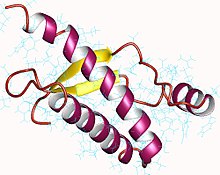Section:
 KEYWORDS
KEYWORDS
Prion and piron-like disorders
Serpina3 inhibitors
Alzheimer / Parkinson
Neurodegenerative diseases
Description
To date, despite numerous active efforts, there are no drugs available for the cure of the neurodegenerative diseases collectively referred as prion and prion-like disorders. Symptomatic treatment is the only available option, including the administration to patients of antipsychotics, such as quetiapine and clonazepam, to treat myoclonus, and of selective serotonin re-uptake inhibitors (SSRIs) to treat depression.
Indeed, through this invention, we are presenting a new class of small molecules acting as SERPINA3 inhibitors, which are able to reduce PrPSc accumulation in prion-infected cell lines, thereby representing a new therapeutic treatment against prion and prion-like diseases.
The development of specific inhibitors of SERPINA3 with an activity in the nanomolar range is expected. The characterization of structural models of the binding of the small molecules with the protein should allow the identification of novel inhibitors with improved potency.
Applications
Current treatment regimens for prion-related and prion-like neurodegenerative disorders target only the symptoms and not the cause of the disorder. Symptomatic treatments include the administration of antipsychotics, such as quetiapine and clonazepam, for the treatment of myoclonus, and selective serotonin re-uptake inhibitors (SSRIs) for the treatment of depression. In light of this, a new therapeutic treatment is proposed, which overcomes the limits of symptomatic treatments and acts directly on the cause of the disease. A new class of small molecules is now available that act as SERPIN3 inhibitors, capable of reducing the accumulation of PrPSc in prion-infected cell lines. The development of specific SERPINA3 inhibitors with activity in the nanomolar range is expected. Characterization of structural patterns of small molecule binding to the protein should allow for the identification of novel inhibitors with greater potency.
TRL Level: 4 (Technology Validated in Lab)
Possible Applications:
- Prion diseases treatment;
- Use in pharmaceutical compositions as serpina3 inhibitors
Advantages:
- Potentially effective therapy for the treatment of prion diseases;
- Valid alternative to the administration of antipsychotics;
- It allows the identification of new inhibitors for neurodegenerative diseases;
- Approved reduction in the concentration of infectious agents
PATENT OWNER: Scuola Internazionale Superiore di Studi Avanzati, Julich Forschungszentrum, Istituto Italiano di Tecnologia
INVENTORS: Silvia Vanni, Giuseppe Legname, Paolo Carloni, Marco de Vivo
PATENT STATUS: Pending
PRIORITY NUMBER: EP18170092
PRIORITY DATE: 30/04/2018
LICENSE: International


